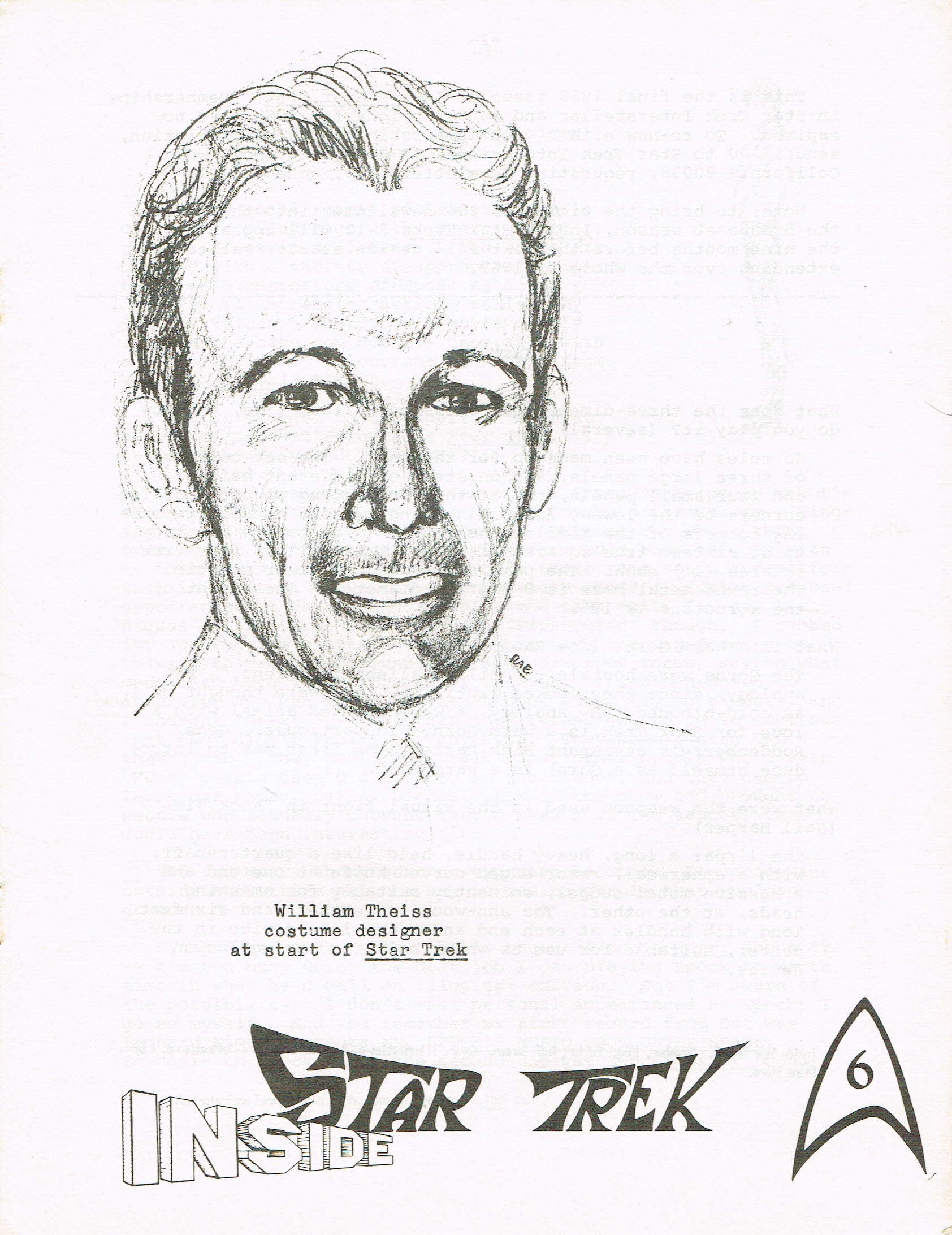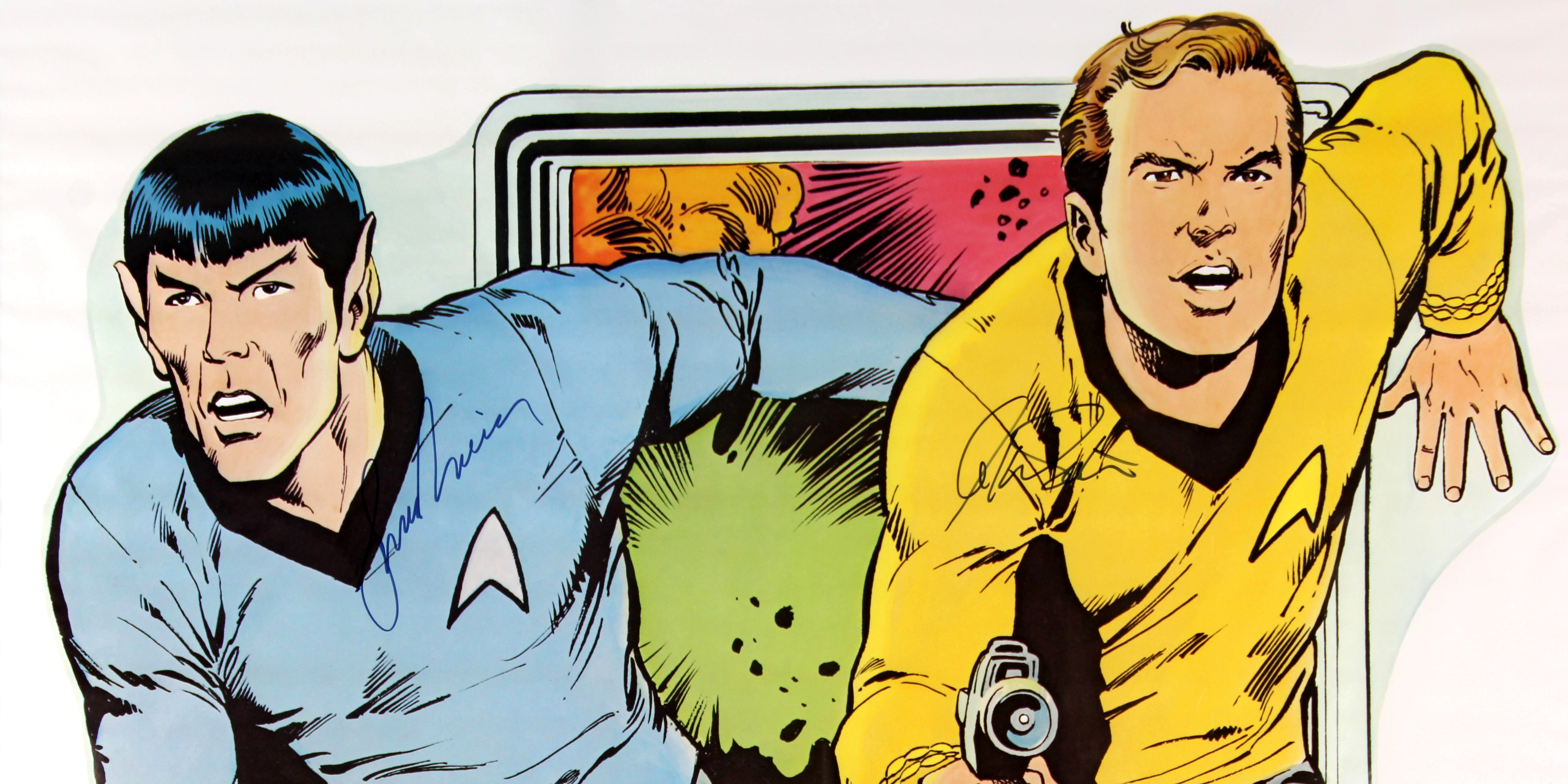Inside Star Trek was a semi-official newsletter, published under the guidance of Gene Roddenberry. This connection gave the writers access to the actors, production crew and sets.
I own the complete run:
- Issues 1 to 12: Inside Star Trek, edited by Ruth Berman
- Issues 13 to 24: renamed Star Trektennial News, edited by Susan Sackett
- Issues 25 to 31: again called Inside Star Trek, edited by Virginia Yable
Here are highlights from issue 6, published December 1968.

What is a warm Gorn? I still don’t know
Reader Joe Rauner sent this question to the newsletter: What is a warm Gorn? Here is the complete reply:
The Gorns were hostile, reptilian aliens in “Arena.” By analogy, since they looked reptilian, they were thought of as cold-blooded. By analogy, a warm-blooded animal with a love for Star Trek is a warm Gorn. In particular, Gene Roddenberry’s assistant Rick Carter (the first man to introduce himself as a Gorn) is a warm Gorn.
So…I have no idea. I have never heard the term “warm Gorn” and Google comes up with nothing. If anyone knows what this is about, please tell me.
On a break from being Spock

In an interview with Leonard Nimoy, we learn his studio office consisted of two rooms crammed with books, scripts, magazines and letters, and that on the bathroom door he taped a poster of himself starring in Gore Vidal’s play Visit to a Small Planet. It ran at the Pheasant Run Playhouse in St. Charles, Illinois, in 1968, and before that was adapted for a movie starring Jerry Lewis.
That poster was probably this photo. Notice the Spock haircut.
Ruth Berman asked about two films Nimoy had done recently: Deathwatch and The Balcony. He noted that both were too grim to be played on network TV, but that they sometimes appeared in rep cinemas. Too grim is about right. Deathwatch, for example, opens with a hooded Nimoy being led to a small room in which he is permitted to walk in small circles for 55 minutes, rest for five, and then walk again for 55 minutes. Prison inmates walking in small rooms is the entire first 10 minutes, but the film gets a lot better as a series of flashbacks show us how the characters ended up in stir. Nimoy is actually quite good in the role.
The film also starred Michael Forest, a few years before he appeared as Apollo in Who Mourns for Adonais?

There is a good bit at the end of the interview, when Berman observes Nimoy stepping back into his role:
Nimoy pushed up the sleeve of his uniform, revealing, rather incongruously, a wrist-watch underneath. “I’m afraid I’m due back at the set,” he said. As he rose, his face and back straightened into Spock’s formality of bearing.
Bill Theiss on bubble-wrap Klingons and placemat Elasians
In D.C. Fontana’s article on Star Trek costume designer Bill Theiss, we learn he struggled to find work after serving in the navy during World War II. He designed neckties for a summer, did a stint as an artist in the advertising department at Universal, moved to the wardrobe department at CBS, worked on two movies in Europe, and then landed a job as a designer on Blake Edwards’ The Pink Panther.

After some time in wardrobe at ABC, Theiss worked on The World of Ray Bradbury, which brought him to the attention of Fontana. They had first met at Universal and, based on this job, she recommended that Roddenberry hire him for The Cage. He then worked on a bunch of other projects in the eight months before Star Trek began its regular production schedule with Where No Man Has Gone Before.
On Star Trek, Theiss said that one of the biggest challenges is “coming up with designs that are futuristic, because in reality they are never futuristic” as he is “limited by fabrics and materials [and] must try to find design devices which spell out the future for us here and now.”
I knew the Elasian guards from Elaan of Troyius were clothed partly in placemats and that Klingon costumes employed bubble wrap, but I had always assumed those were cost-saving choices. Theiss had a far more artistic explanation:
My main approach for turning contemporary fabrics into futuristic materials and fabrics is to employ things out of context. This device can take a number of forms. One is to use a material designed for one purpose for something totally different. For example, plastic placemats became Neo-Renaissance body armor in Elaan of Troyius. In another case, I sprayed fabrics with metallic color using geometric lace as a stencil. That was on A Taste of Armageddon, where I also used upholstery fabrics on the men’s costumes. Part of the Klingon uniform is a plastic packing material called Sealed Air.

And Theiss’ famous predilection for showing a lot of skin? That too had motivation beyond the obvious:
Clothes since the mid-nineteenth century have become less and less bulky, cumbersome, protective (both physically and morally) and headed faster and faster apparently into complete nudity. This does not mean clothes of the future will be non-existent, or that people in the future will be nude… I can only deduce the future will bring literally thousands of style changes, and nudity as one of them.

Inside Star Trek is an invaluable source of early Star Trek voices. I’ll cover each issue. Click here to read other articles in this series.

